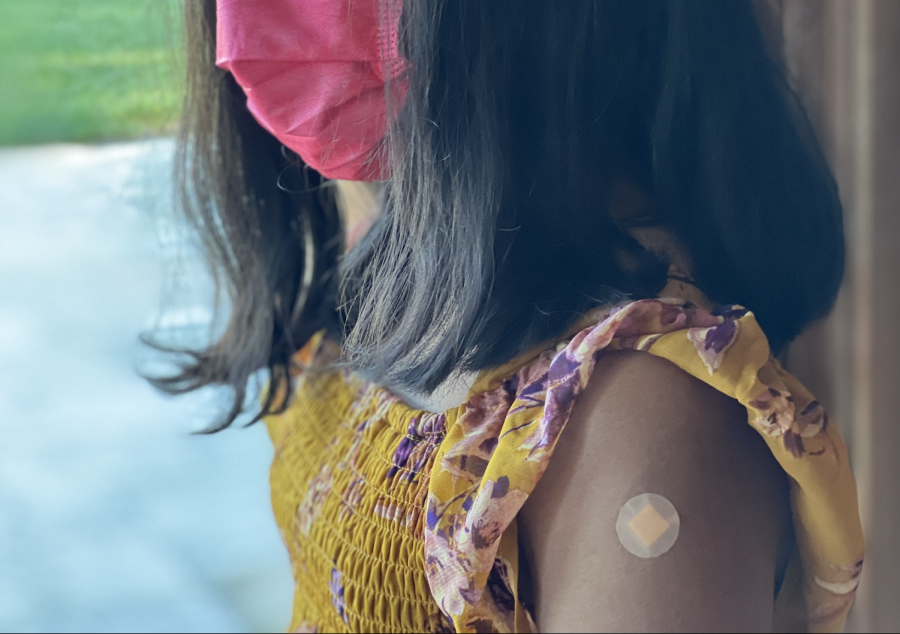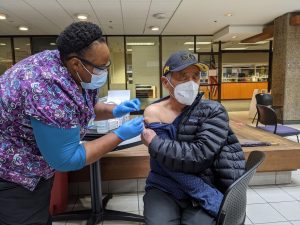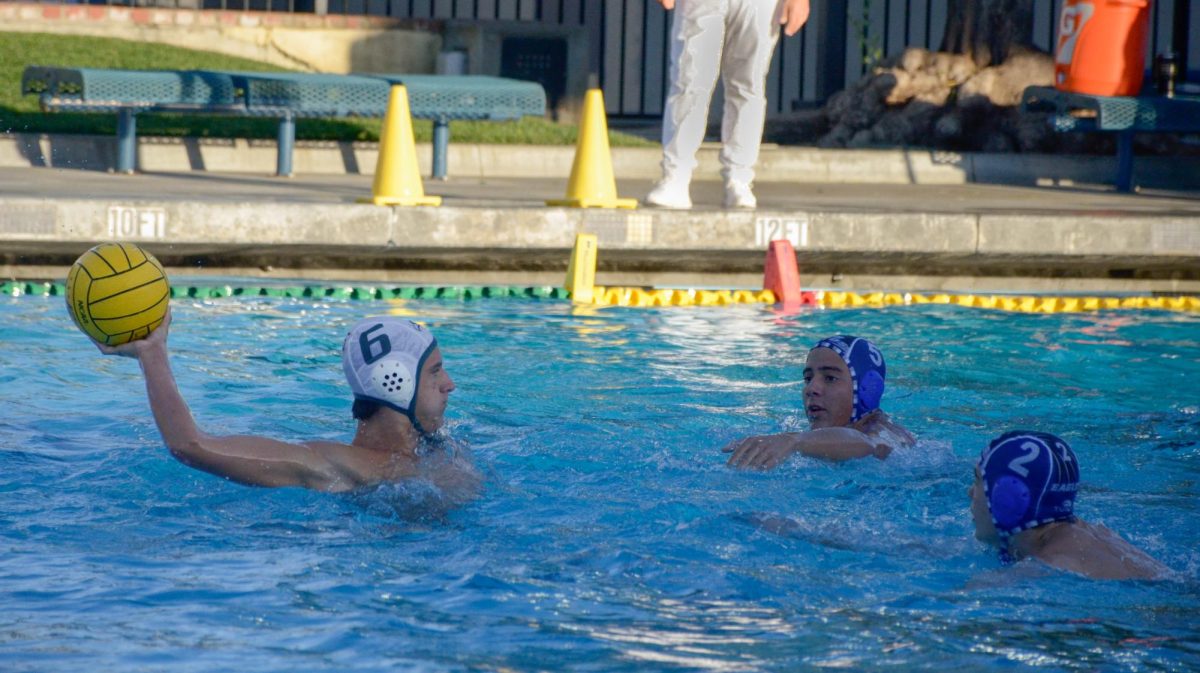COVID-19 vaccination mandates enforced in New Zealand, Italy and United States
Third-grader Sofia Mohammed received her first dose of the Pfizer COVID-19 vaccine on Nov. 12. The FDA officially authorized the emergency use of Pfizer COVID-19 vaccine for children from 5-11 years old with a 91% efficacy rate on Oct. 29.
December 1, 2021
New Zealand and Italy placed new vaccine mandates and authorized more vaccines in October to increase vaccination amongst education and healthcare workers. As of Nov. 3, the United States has reported 22 cases per 100,000 people, while New Zealand has reported 2.4 cases per 100,000 people and Italy has reported 7.2 cases.
New Zealand’s COVID-19 response minister Chris Hipkins announced in a press conference with prime minister Jacinda Ardern on Oct. 11 that all workers in the education sector, along with workers in the healthcare and disability sector, including residential care, home support services and non-government organizations, should have received their first dose by Oct. 30.
“Most of the people working in these sectors are now already fully or partially vaccinated, but we can’t leave anything to chance, so that’s why we’re making it mandatory,” Hipkins said in the press conference. “It wasn’t an easy decision, but we need to have the people who work with vulnerable communities who haven’t been vaccinated to now take this extra step.”
In a press release from the prime minister’s office on Oct. 23, Hipkins also announced an expanded vaccination mandate of the one released on Oct. 11, stating that education and healthcare workers will be given until Nov. 15 to receive their first dose, with the exception of prison facilities workers, who will have until Nov. 6. The category of workers in New Zealand also expanded to 40% of the workforce on Oct. 26, including close-contact business workers such as workers in tattoo shops, restaurants or hair salons.
“Any employer is able to set what is required of their workplace, what they believe to be appropriate,” upper school science department chair Anita Chetty said. “Things are mandated because we assign people who are authorities who make decisions for us, that is best for us.”
New Zealand vaccination progressed further with the ‘Vaxathon’ event that was held on ‘Super Saturday’ on Oct. 16 through the organization efforts of the New Zealand prime minister Jacinda Ardern. Celebrities and athletes helped broadcast the Vaxathon event, which was on television for eight hours and garnered a total of 120,000 administered Pfizer vaccine doses by the end of the day.
Inhan Lee, founder of miRcore, a nonprofit organization that works to democratize medical research, and WhyVax, a miRcore vaccine advocacy group that attempts to resolve the fears of vaccine hesitant people, comments on the importance of Vaxathons.
“It is important that we spread awareness of vaccination and its benefits through events like Vaxathons,” Lee said. “As more people get vaccinated, it helps prevent misinformation and also raise vaccination percentages.”
Italian officials enforced a vaccination mandate on Oct. 15, requiring all workers in the workforce to show a health pass, a government-issued QR code, in order to enter their workplace. To obtain this pass, Italian workers must show proof of vaccination and a negative swab test or recent COVID-19 recovery. Businesses will withhold the salaries of workers until they are able to present a pass and attend work again. The government made the health pass a requirement earlier in July for all Italians who wished to participate in leisure activities, such as swimming, dining or visiting museums.
“There is a collection of scientific evidence and a small group of experts elected or appointed to interpret the best actions for the health and safety of the greatest number of citizens,” said Laura Nicholson, Associate Professor of Molecular Medicine at Scripps University. “Italy made a centralized decision for all its citizens, which is the right way to manage the health of the public.”
The United States recently focused on vaccination efforts towards children from 5-11 years old. On Oct. 29, the FDA officially authorized the emergency use of Pfizer COVID-19 vaccine for children from 5-11 years old with a 91% efficacy rate. The FDA conducted a study with 3,100 5-11 year old children to determine Pfizer COVID vaccine’s safety for children in that age group, which resulted in no serious side effects. The CDC also announced on Nov. 2 a unanimous recommendation on children from 5-11 years old receiving the COVID-19 vaccines, enabling schools to protect students more during in-person learning.
Cady Chen (12), director of innovation and strategy at GENup, a social justice organization that uses youth voices to advocate for education, is involved in the GENup campaign for vaccine advocacy. She emphasizes the benefits of taking the newly authorized vaccines for children.
“Having these blanket vaccine mandates for school aged children is incredibly important because there’s been a lot of talk about children [getting] that sick from COVID,” Cady said. “Another day, we still live in communities, we still go back home to our family. It’s important that if there is a way to decrease infection rates, [to] take it.”
The mandates in Italy have received massive backlash due to the requirement of needing a health pass in order to get paid, with protests by workers and anti-vaxxers taking place in the country. The Italian police force became involved in fear of violence, while multiple schools around the country let out early due to warnings issued that the violence following the protests could be dangerous. Protestors defied any warnings issued by the police force by offering flowers as an exchange of peace with the police but expressed their disapproval of the health pass mandate.
The New Zealand mandates faced similar protests from workers such as NZ Teachers Connected, due to the mandates, which could lead them to lose their jobs if unvaccinated. Multiple employees in the United States were also fired for not receiving the vaccines, such as 593 United Airlines employees who were fired in September.
“Mandates really highlight inequalities,” Nicholson said. “A location or group cannot have a mandate until it has made that mandated thing available to everyone. If the world would empower the WHO to direct and share resources equally, then there could be a worldwide vaccination mandate, rolling in time, as each place gains full access.”


















![“[Building nerf blasters] became this outlet of creativity for me that hasn't been matched by anything else. The process [of] making a build complete to your desire is such a painstakingly difficult process, but I've had to learn from [the skills needed from] soldering to proper painting. There's so many different options for everything, if you think about it, it exists. The best part is [that] if it doesn't exist, you can build it yourself," Ishaan Parate said.](https://harkeraquila.com/wp-content/uploads/2022/08/DSC_8149-900x604.jpg)




![“When I came into high school, I was ready to be a follower. But DECA was a game changer for me. It helped me overcome my fear of public speaking, and it's played such a major role in who I've become today. To be able to successfully lead a chapter of 150 students, an officer team and be one of the upperclassmen I once really admired is something I'm [really] proud of,” Anvitha Tummala ('21) said.](https://harkeraquila.com/wp-content/uploads/2021/07/Screen-Shot-2021-07-25-at-9.50.05-AM-900x594.png)







![“I think getting up in the morning and having a sense of purpose [is exciting]. I think without a certain amount of drive, life is kind of obsolete and mundane, and I think having that every single day is what makes each day unique and kind of makes life exciting,” Neymika Jain (12) said.](https://harkeraquila.com/wp-content/uploads/2017/06/Screen-Shot-2017-06-03-at-4.54.16-PM.png)








![“My slogan is ‘slow feet, don’t eat, and I’m hungry.’ You need to run fast to get where you are–you aren't going to get those championships if you aren't fast,” Angel Cervantes (12) said. “I want to do well in school on my tests and in track and win championships for my team. I live by that, [and] I can do that anywhere: in the classroom or on the field.”](https://harkeraquila.com/wp-content/uploads/2018/06/DSC5146-900x601.jpg)
![“[Volleyball has] taught me how to fall correctly, and another thing it taught is that you don’t have to be the best at something to be good at it. If you just hit the ball in a smart way, then it still scores points and you’re good at it. You could be a background player and still make a much bigger impact on the team than you would think,” Anya Gert (’20) said.](https://harkeraquila.com/wp-content/uploads/2020/06/AnnaGert_JinTuan_HoHPhotoEdited-600x900.jpeg)

![“I'm not nearly there yet, but [my confidence has] definitely been getting better since I was pretty shy and timid coming into Harker my freshman year. I know that there's a lot of people that are really confident in what they do, and I really admire them. Everyone's so driven and that has really pushed me to kind of try to find my own place in high school and be more confident,” Alyssa Huang (’20) said.](https://harkeraquila.com/wp-content/uploads/2020/06/AlyssaHuang_EmilyChen_HoHPhoto-900x749.jpeg)
















